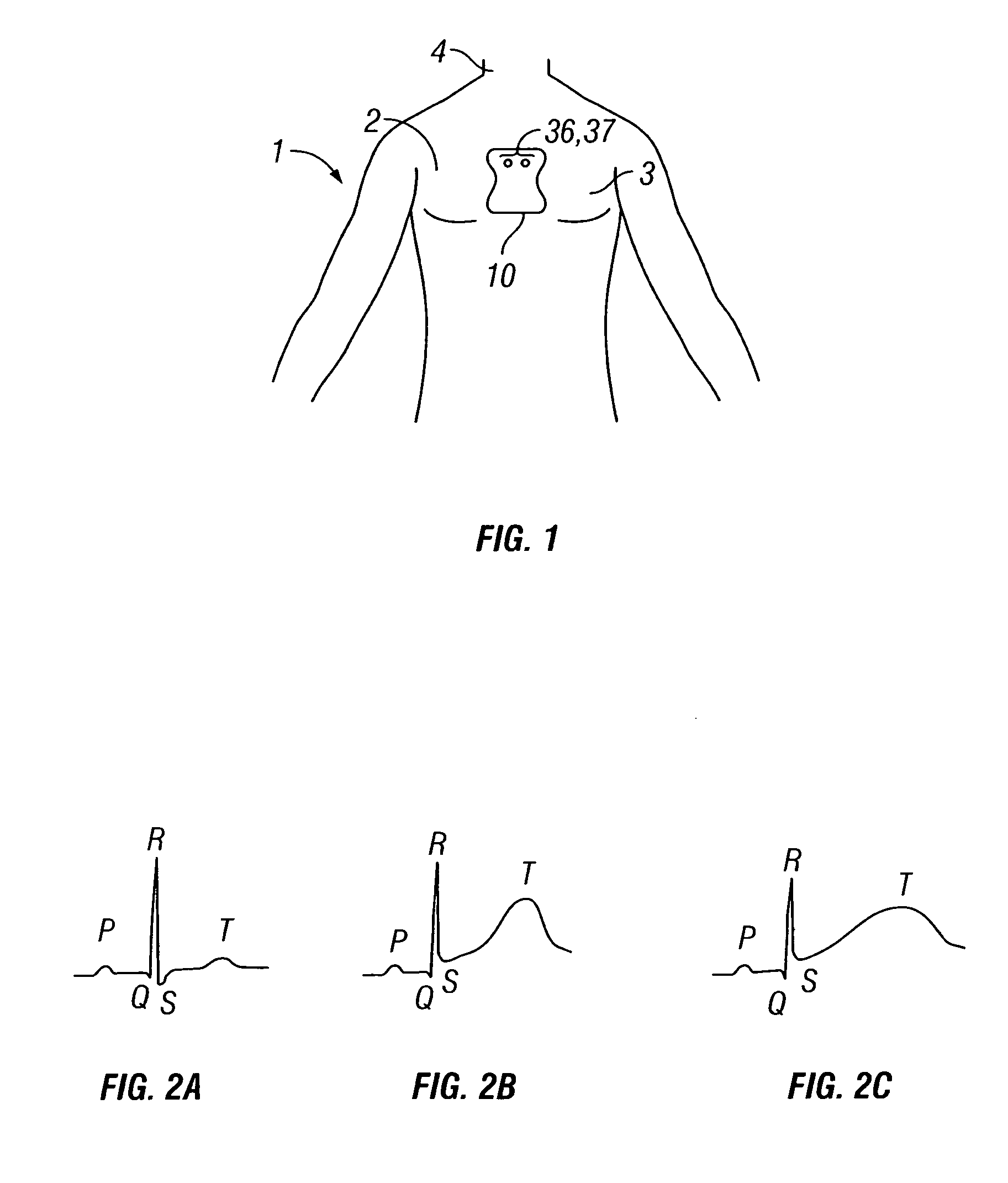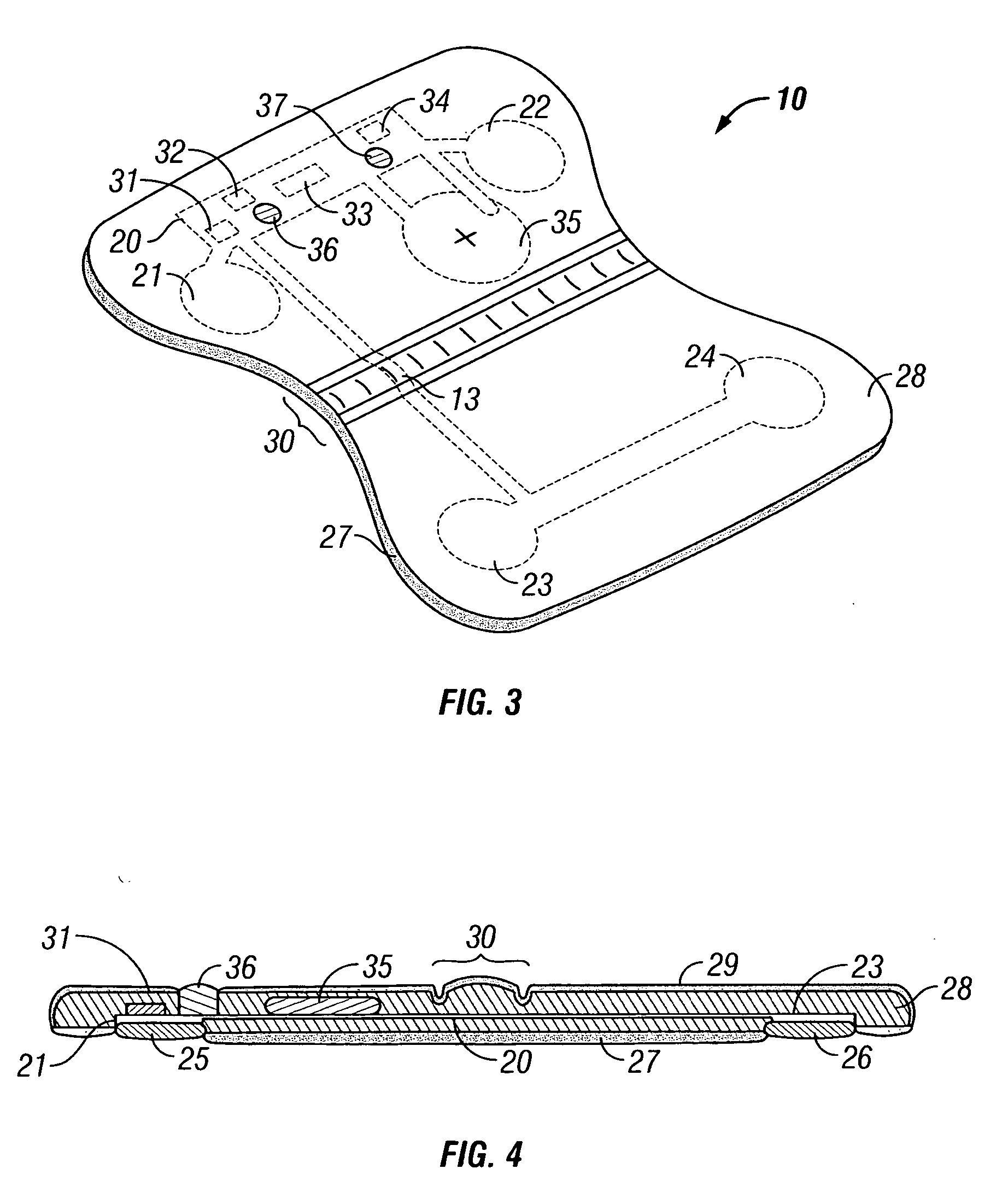Emergency heart sensor patch
a heart sensor and patch technology, applied in the field of non-invasive electrocardiogram (ecg) monitoring, can solve the problems of affecting the quality of life of survivors, and affecting the survival rate of patients, and achieves the effect of simple intuitive us
- Summary
- Abstract
- Description
- Claims
- Application Information
AI Technical Summary
Benefits of technology
Problems solved by technology
Method used
Image
Examples
Embodiment Construction
[0038] The invention, shown in various embodiments of FIGS. 1 and 3-9 is a non-invasive cardiac patch for detection and indication of a heart condition during a medical emergency. The patch 10 is thin and flexible for placement on the chest area 2 of a person 1 experiencing a medical emergency, particularly with symptoms of a heart attack The sensor patch relies on a surface electrocardiogram (ECG) for detecting and analyzing non-invasively the electrical activity of the heart and indicating the results through an indicator integrated into the patch. The smart patch is fully self-contained and self-powered.
[0039] Referring to the embodiment of FIGS. 3 and 4, the emergency patch 10 comprises, for example, four ECG electrodes 21, 22, 23 and 24, an ECG amplifier 31, a processor 33, and a battery 35. The processor 33 is typically a digital signal processor for performing numerical computation from data obtained from an analog-to-digital converter 32. The sensor patch 10 also incorporat...
PUM
 Login to View More
Login to View More Abstract
Description
Claims
Application Information
 Login to View More
Login to View More - R&D
- Intellectual Property
- Life Sciences
- Materials
- Tech Scout
- Unparalleled Data Quality
- Higher Quality Content
- 60% Fewer Hallucinations
Browse by: Latest US Patents, China's latest patents, Technical Efficacy Thesaurus, Application Domain, Technology Topic, Popular Technical Reports.
© 2025 PatSnap. All rights reserved.Legal|Privacy policy|Modern Slavery Act Transparency Statement|Sitemap|About US| Contact US: help@patsnap.com



